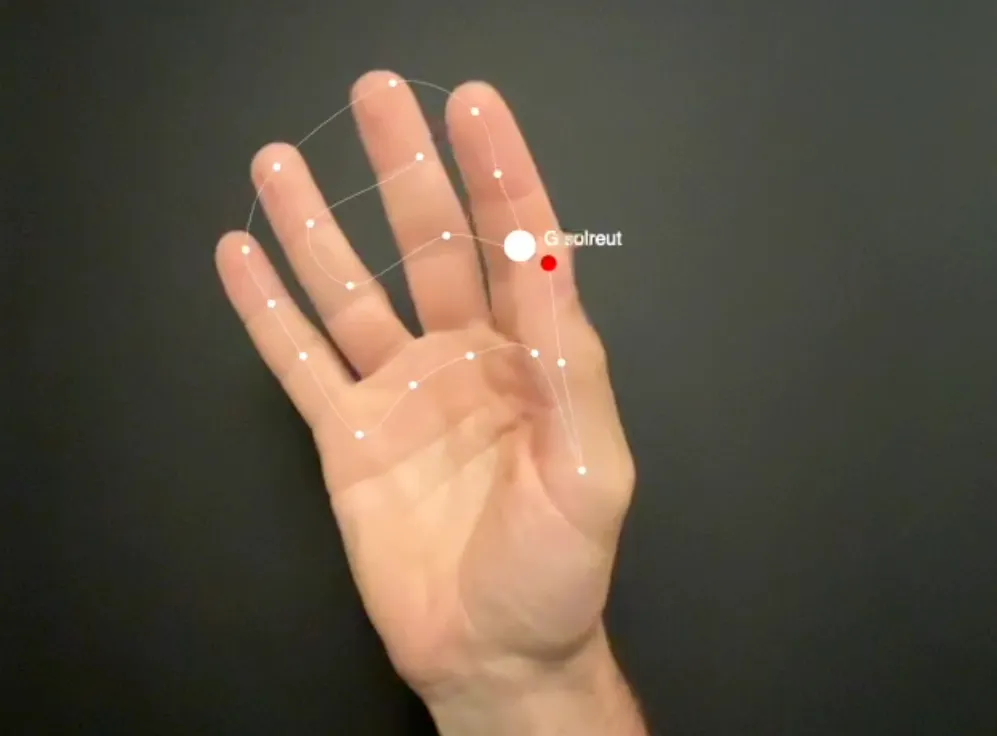

For hundreds of years, musicians were trained to sight-read music using a solmization method that revolved around the Guidonian hand. Simplifying things a bit, the idea is that every joint of the hand corresponds to a note. Singers would touch the joint of the note they were singing with their thumb. In this way, they learned to associate notes with a physical gesture — a deeply embodied way of learning solmization. This is all quite similar to how instrumentalist associate notes with a position on their instrument. In fact, hands could even be used as instruments themselves: we know that choir masters could use the same gestures to indicate which notes the singers were supposed to sing.
The experiment is in a very early stage. The project revolves around a model developed by Google that detect hand position in images or video. Associating the joints with joints with pitches is straight forward — we are showing the Medieval names. The difficult part is to recognize to the different gestures. The approach currently taken is extremely naive: we look for the joint closest to the tip of the thumb. That works in some cases, but is not very reliable yet. Time permitting, the idea is to turn this app into an interface to collect annotated solmization gestures, and then train a gesture recognition model on that data.